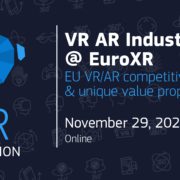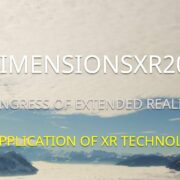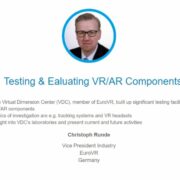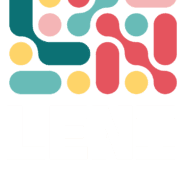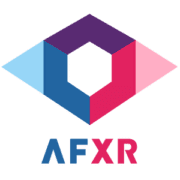Methods for Virtual Reality and Augmented Reality Qualification
The Virtual Dimension Center (VDC) Fellbach is creating a methodological toolkit to support the development of V/AR training courses.
Many companies have been looking at the workplace of the future in recent years. Among the most interesting and promising technologies in this context are Virtual Reality (VR) and Augmented Reality (AR).
With the change of the workplace, the training of many occupational profiles is also changing. It will become necessary to teach certain basic knowledge of new technologies already in studies and training in order to respond to the change in job profiles. As cross-sectional technologies and methods, VR and AR encompass a huge number of knowledge domains. These include perception/cognitive psychology, work science, computer graphics, acoustics, haptics, user interface design, hardware development, software development, etc. In addition, for practical use, there is often concentrated knowledge from the application field (such as design, maintenance, ergonomics, industrial engineering, marketing communication, etc.) and from the industry.
Competence profiles for V/AR specialists have already been developed at VDC (see the report published in February 2021: “Kompetenzaufbau V/AR – Identifikation notwendiger V/AR-Kompetenzen aus der Perspektive der Wirtschaft und Forschung”), as well as new requirements for an up-to-date V/AR qualification. Now VDC has developed methods to build V/AR training modules. The objective was to create a guideline according to which training providers can design their respective V/AR courses.
First, basic didactic teaching was analysed for methods to build teaching modules. Of particular interest were the understanding of teaching-learning processes, the learning goal taxonomy, fundamental teaching concepts as well as more far-reaching requirements for successful teaching. This is followed by a review of current V/AR teaching with regard to learning objectives, forms of learning and the use of teaching materials. The conclusion is a transfer of the learning objectives taxonomy to the V/AR learning objectives as well as an allocation of suitable teaching concepts to individual V/AR course topics and V/AR knowledge modules (example: Which V/AR course contents can best be taught with experiential teaching, for which V/AR contents are other teaching concepts better).
The entire report Application Centre VAR – Report #22 – WP 3 – Capacity Building – VAR Education Modules can be found here: www.vdc-fellbach.de/wissen/fachinformationen/studien-analysen/.
The work presented was done as part of the project “Application Centre V/AR”, which is funded by the Ministry of Economics, Labour and Housing Baden-Württemberg.


